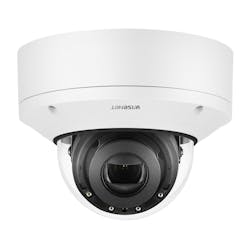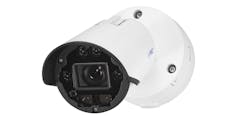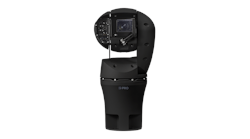Hanwha Techwin America has announced new Power over Ethernet (PoE) extender cameras. Part of the Wisenet X series PLUS line, these unique cameras are designed to save integrators and end-users time and money when they add cameras to their installations. The cameras will be on display at Hanwha Techwin America’s booth at ISC West 2020.
The new PoE extender cameras are modular, which makes them easy to install, service and upgrade. For new installations, integrators can run two PoE cameras per cable run, which saves on the number of ports and switches required. For retrofit applications where an additional camera is desired, you simply replace the old camera with a PoE extender camera, then install and connect a new PoE camera.
Wisenet X series PLUS cameras feature in-camera audio messaging playback, extended temperature handling and removable color skins. Available in either 2-megapixel or 5-megapixel indoor or outdoor configurations, the cameras use magnets to lock sensor modules into the housing for instant snap-in installation. Electricians can run conduit with a single PoE+ connection to the mounting plate without the camera base, module and top cover. This allows security professionals to snap the camera and covers into place after the job site is clean in minutes.
“The PoE+ specification allows for over 25 watts to be delivered to a device versus only 15.4 watts available in standard PoE devices,” says Ray Cooke, vice president of Solution & Product Management, Hanwha Techwin America. “Using a PoE+ capable switch or injector, installers simply deploy a PoE extender camera and then connect an additional PoE camera beyond that via the extender camera’s PoE output jack. It’s a great option to expand existing installations or reduce infrastructure for new installations.”
The PoE extender camera can be 100 meters (about 325 feet) from the switch, while the second PoE camera can extend a further 80 meters (about 260 feet) beyond. It also is possible to connect a standard network device to the extender.
Features:
- Increased operating temperatures from minus 58 degrees Fahrenheit to 140 degrees F
- Tilt angles increased to 85 degrees for wider coverage with low ceilings
- New gyro sensors provide shock detection






